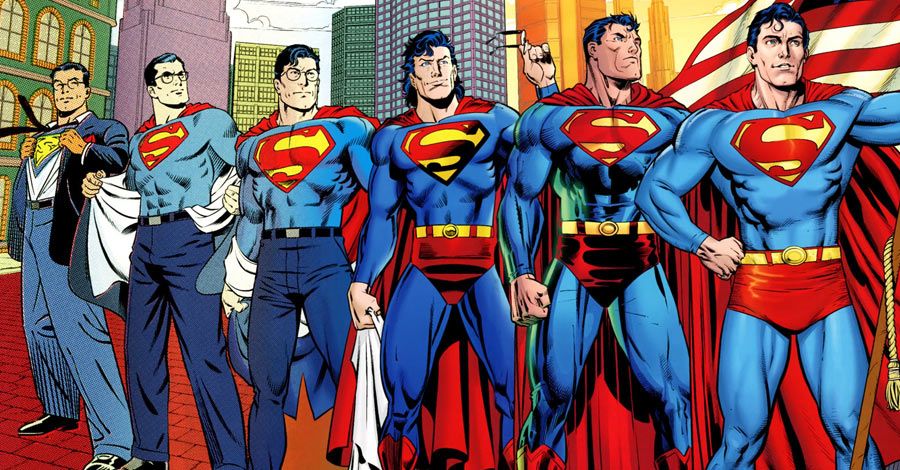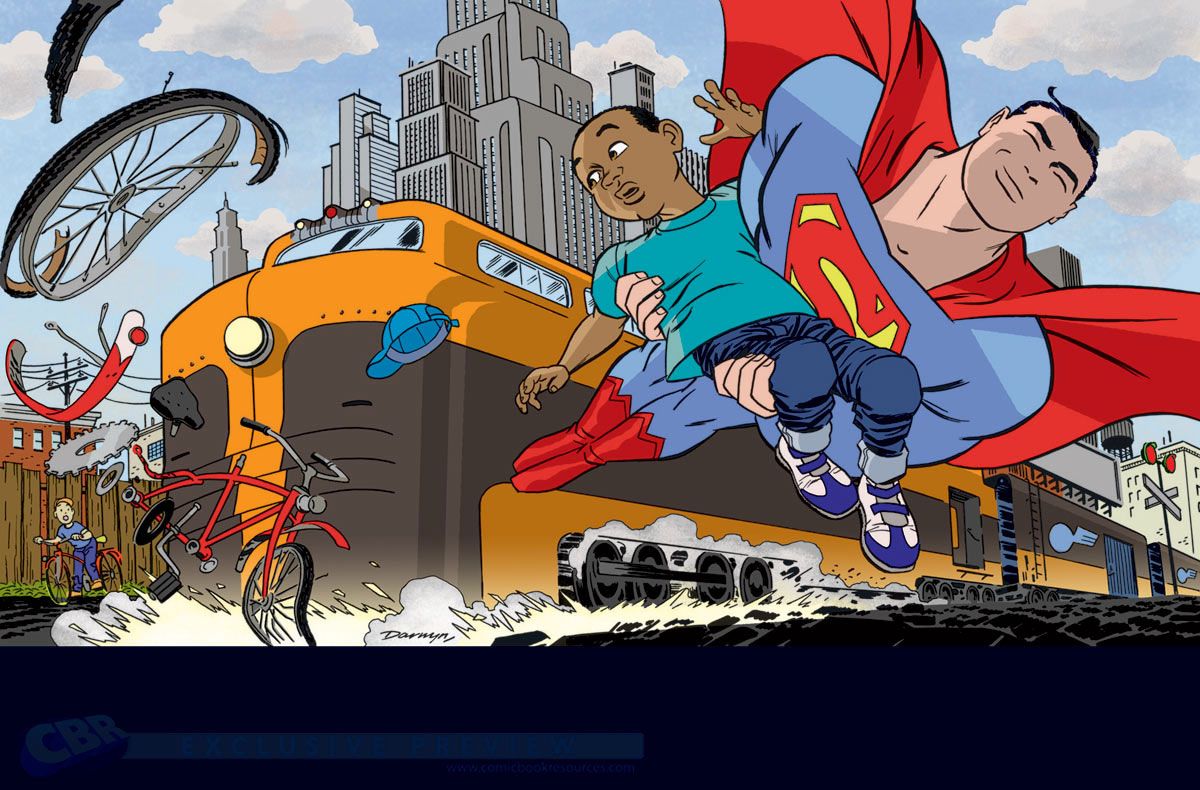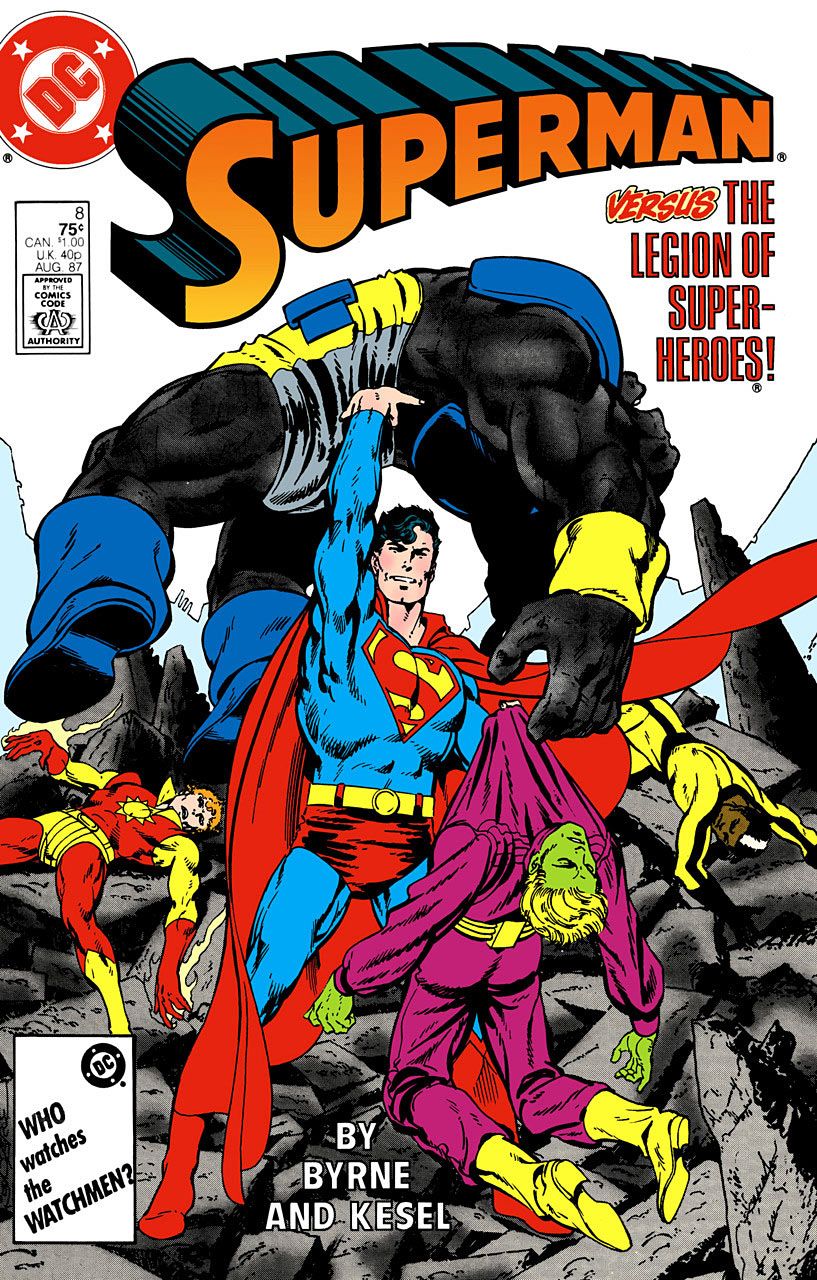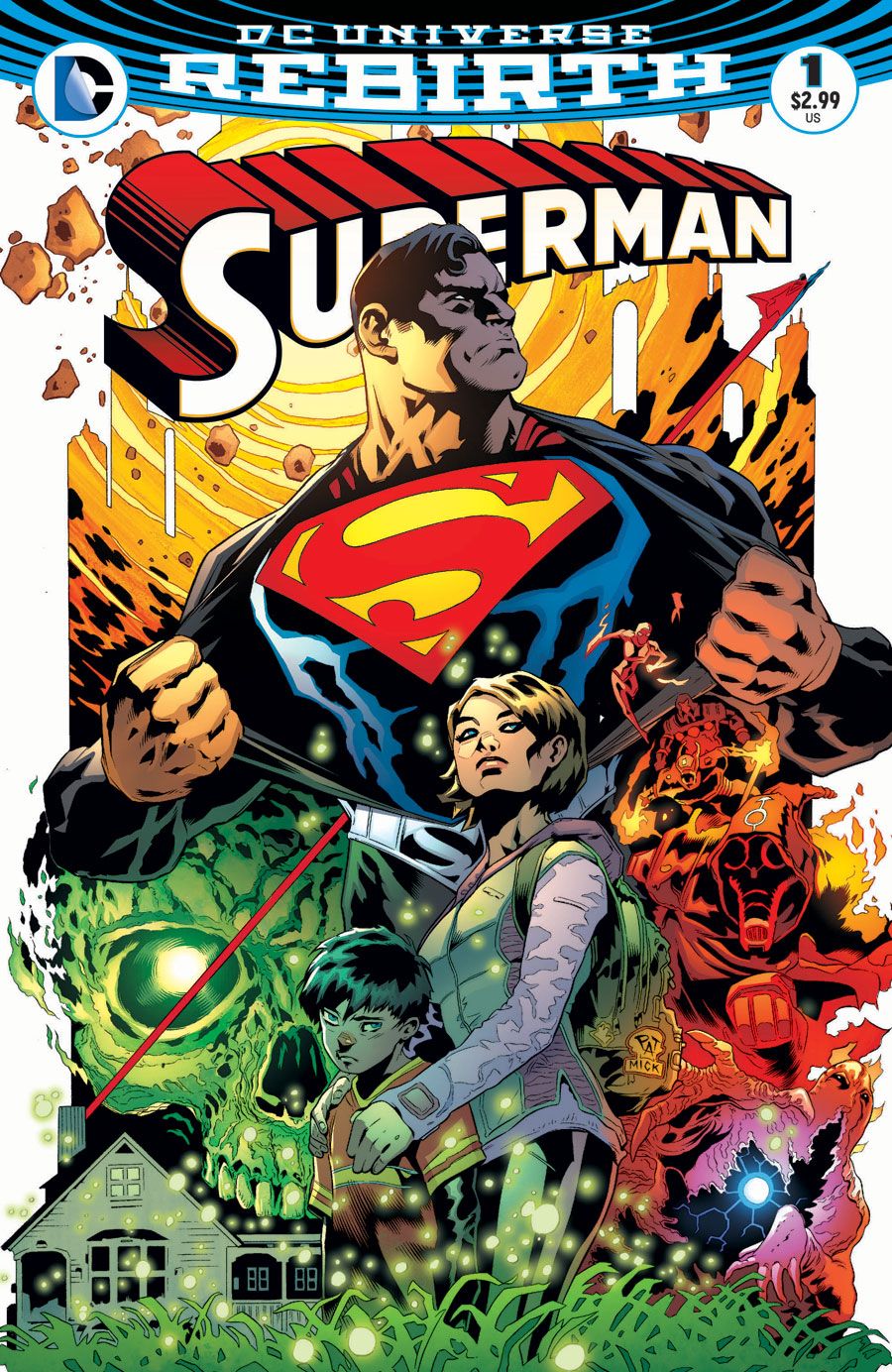Some 30 years ago, at the end of May 1986, the instant-classic "Whatever Happened to the Man of Tomorrow?" (from writer Alan Moore, penciler Curt Swan and inkers George Perez and Kurt Schaffenberger) bid farewell to the Superman of Earth-One and all his accumulated mythology. It set the stage for writer/artist John Byrne -- at the time, fresh off a definitive run on "Fantastic Four" -- to head up a new Superman for the post-"Crisis on Infinite Earths" DC.
Fast-forward 25 years, to September 2011, when DC Comics relaunched its entire superhero line as the "New 52." At that time, Superman's makeover came courtesy of writer Grant Morrison, penciler Rags Morales, and writer/artist George Perez -- and it also wiped away a big chunk of continuity.
RELATED: "Superman: Rebirth" Explains What Happened to the Man of Tomorrow
Now, DC is relaunching Superman yet again, but this time it returns to that post-"Crisis" version, recently revealed to have survived the cosmic calamities of "Flashpoint" and "Convergence." The Superman of what I call "Earth-August" -- as in August 2011, just before the New 52 debuted -- went through quite a bit. In the wake of the New 52 Superman's death at the end of "The Final Days of Superman," the previous Man of Steel has returned as the primary Man of Tomorrow in "Superman: Rebirth." Here's a quick primer for those who might have come in late.
THE BASICS
At the risk of being obvious, the biggest differences between the New 52 Superman and the post-"Crisis," pre-"Flashpoint," Earth-August version come down to age and experience. The New 52's present day took place some five years after the first appearance of its Superman. Since then, DC has published just under five years' worth of comics, as compared with the 25 years' worth of comics featuring the Earth-August Superman. All those adventures also gave the latter ample room to mature and develop, as we'll soon see.
Still, it's not quite fair to compare that quarter-century to the New 52's five years, mainly because the point of the New 52 was to make DC's characters younger and (theoretically) more accessible. The 1986 reboot had done something similar, hinting that the post-"Crisis" DC Universe was up to Year Seven or so. Regardless, back then Byrne, Marv Wolfman and Jerry Ordway were inspired by many venerable sources, from Max Fleischer's physicality to Christopher Reeve's endearing squareness and Jack Kirby's dynamism. For the most part, those who followed tried similarly to make Superman progressive but familiar. While the biggest change in characterization involved getting rid of Clark Kent's practiced nebbishness, that didn't make Superman any more hip.
In terms of powers and basic setup, the Earth-August Superman wasn't much different from any other incarnation; and the differences themselves were largely semantic. As outlined in 1986's six-issue "Man of Steel" miniseries (written and penciled by Byrne and inked by Dick Giordano), Kal-El was conceived in a "birthing matrix" on a sterile, emotionally-repressed Krypton. The relatively passionate Jor-El (together with his uptight wife Lara) then fitted the matrix -- which hadn't yet completed its task -- with a star-drive and rocketed it to Earth. It arrived on the outskirts of Smallville, Kansas and popped out baby Kal practically into the arms of a certain kindly couple. Thus, in addition to all the powers and abilities, etc., the post-"Crisis" Superman was also unquestionably an American citizen, by virtue of being born in the United States.
Raised by the aforesaid Jonathan and Martha Kent -- who explained that she carried and gave birth to Kal while snowbound during a particularly nasty winter -- young Clark's powers developed gradually, culminating late in his teenage years in the ability to fly. (For those who might have cared, Byrne explained that Clark's flight came from a sort of telekinesis; and that an "aura" made him invulnerable.) In addition to best friend Lana Lang, Clark palled around with future President of the United States Pete Ross and future minor supervillain Kenny Braverman. He tried to be nice to teenage Lex Luthor during the family's brief time in Smallville, but apparently Clark didn't make much of an impression on Lex. When Clark became a high-school football star, Pa Kent worried that the fame would go to his head, and finally told Clark he wasn't from Earth. (Nobody knew at that point where Clark was from.) This convinced Clark he needed to help people, and he left home to travel the world.
Thanks to "Man of Steel" and the first issue of Byrne's "Superman," we know that Clark left Smallville at age 18, became Superman at age 25, learned about Krypton at age 28 and first encountered Kryptonite (powering the Luthor-created Metallo) a short while later. He didn't have a formal "Superboy" career, although (according to Geoff Johns and Gary Frank's "Superman: Secret Origin") young Clark traveled frequently to the 31st century with the Legion of Super-Heroes. Meanwhile, in between Smallville and Metropolis, Clark went to college and traveled the world, using his powers in secret. Following Superman's first appearance -- saving Lois Lane and the crew of an experimental space shuttle -- Clark got a job at the Daily Planet, and except for a brief stint as the editor of NewsTime magazine, never really left it.
Otherwise, this Superman is probably defined best by his relationships. In one of the more distinct breaks with older continuity, Ma and Pa Kent didn't die prior to Clark's Superman career; but were a constant presence in his life until Pa's death. Likewise, Lana Lang wasn't just his best friend growing up, she also became one of the few people (outside of the Kents) to know about his powers.
Of course, Clark/Superman's most significant relationship was still with Lois. They got engaged in 1990 (before she learned his secret) and were married in 1996. Arguably, the Earth-August Lois & Clark coupling was helped immensely by the changes made to Clark & Superman's relationship. In the pre-"Crisis" days, the "Clark Kent" seen by the public was a persona crafted by Kal-El, who had been fully aware of his Kryptonian origins for most of his life. By contrast, the Clark of Earth-August was much slower to learn the truth. Accordingly, "Superman" was a persona crafted by Clark Kent, who thought of himself as an Earthling. This made it easier not just for Lois to relate to Clark, but for her to relate to Superman once she learned the truth.
THE ADVENTURES
THE SUPPORTING CAST
BOOKENDS
In addition to "Man of Steel," DC proffered two more versions of the Earth-August Superman's origin: Mark Waid and Leinil Yu's twelve-issue "Superman: Birthright" and Johns and Frank's "Superman: Secret Origin." I'm not going to try and harmonize them, or even rationalize how various time-twisting events could have rationalized one giving way to another, because none of it really affects the character of the Earth-August Supes. I suppose "Secret Origin" is the most controlling because it's the most recent, but we'll have to see if it ends up making a difference.
One thing seems certain, though: in the Earth-August timeline, Superman (or the "Prime Superman," as he would later be known) was destined to start a dynasty of super-folk stretching into the 853rd Century -- one million months from the publication of 1938's "Action Comics" #1, as it happens -- before emerging from his solar Fortress of Solitude to be reunited with his long-lost loved ones. This was the story of "DC One Million," the excellent 1998 line-wide crossover from writer Grant Morrison and penciller Val Semeiks. It ties more directly into "All Star Superman" and even into Morrison's New 52 "Action Comics," and it's probably been rendered moot by "Convergence"; but it's such a good story I have to mention it here.
IN CONCLUSION
DC has integrated survivors of lost universes into its main continuity before. For example, the "Matrix" Supergirl came from the same pocket universe as the condemned Phantom Zoners. Likewise, "Infinite Crisis" revealed that Power Girl was really from the pre-"Crisis" Earth-Two, same as her gray-templed super-cousin. Regardless, to do so on such a grand scale is fairly unprecedented. Whether this is permanent, or just a temporary part of a longer "Rebirth"-oriented storyline, obviously remains to be seen. New 52 Supes is dead, but is he fully gone? And How many Loises will come out of "Rebirth?"
One thing seems clear, and that is DC's desire to satisfy readers who have been frustrated with the various ups and downs of the New 52 Superman titles. Bringing the Earth-August Superman back into the fold comes with its own set of challenges, but it also suggests a level of familiarity and comfort which could help readers through the rough patches. He's not thirty "in-story" years older than his New 52 counterpart, but one hopes the older Superman's life experiences have prepared him for the rigors of a high-profile relaunch.
Stay tuned to CBR for more on Superman's role in the DC Rebirth.





